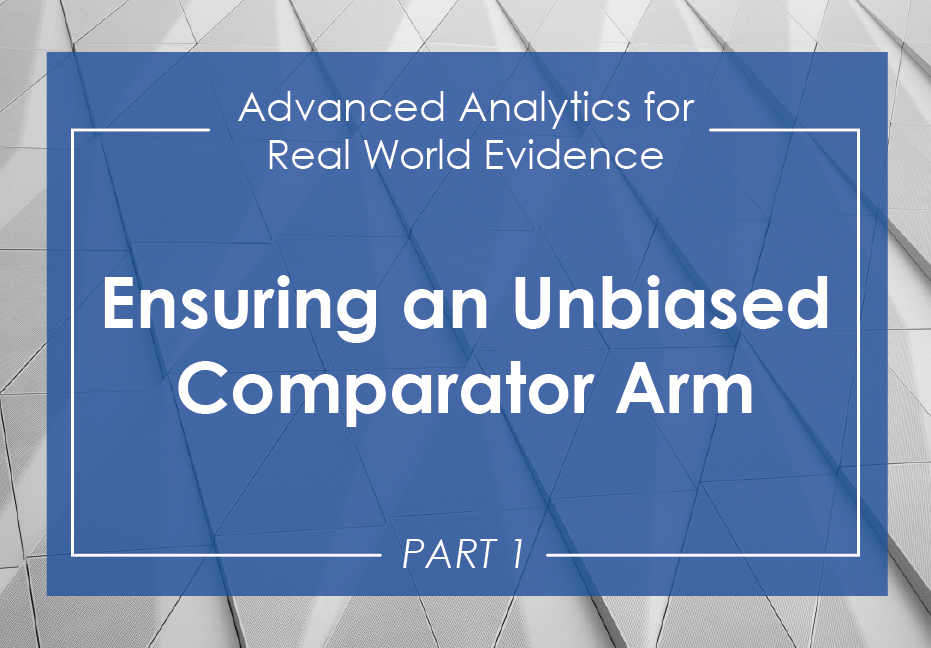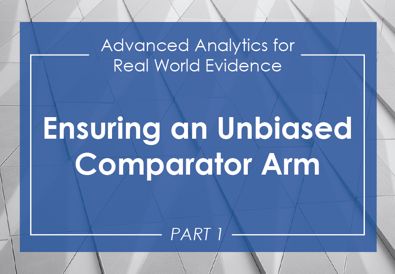Ensuring an Unbiased Comparator Arm

Regulators in both the United States and Europe have responded positively to the use of SCAs in clinical development.[1] While implementation of this method for

regulatory purposes might be a new development, the majority of statistical and mathematical theories used for the design of SCAs are decades old and familiar to the scientific community. The desire to speed up and lower the cost of drug development, coupled with increased availability of rich real-world data, contributed to the increased openness towards using SCAs as supplementary evidence to accompany regulatory submissions using single arm trial data only.
For instance, in oncology, where enrichment and stratification strategies had resulted in nearly 24% of oncology trials resembling rare disease studies, SCA has led to the expedited approval of several new therapies. AstraZeneca’s EFGR modulator Tagrisso received FDA approval within three years from the first patient receiving a dose,[2][3] while Loxo’s Vitraki received approval in five years.[4][5] The use of SCA has also enabled investigators to leverage combined data from uncontrolled single-arm trials and post-market studies to create much smaller trials. Pfizer’s Ibrance (for men with breast cancer) was the result of a Synthetic Control Arm composed of a post-market extension of a similar therapy for women, combined with results from three databases.[6] In non-oncology indications, single-arm trials are often used in combination with natural history studies. Using established knowledge of natural disease progression, Novartis was able to obtain approval for Zolgensma (gene therapy for spinal muscular atrophy) after enrolling only 22 patients.[7] BioMarin’s Brineura also obtained approval using a natural history study in the comparator arm, after enrolling 24 patients. It is now the only drug on the market to combat Batten’s disease.[8]
Just as various adaptations suit different needs in adaptive trial design, the types of data available to sponsors, the desired sample size, and the anticipated length of a trial might determine the right approach to designing an SCA. Once the appropriate data sources are identified, a careful assessment needs to be made about the potential biases which are inherent in real world data or present in historical trial data as they were not collected for the purposes of the comparison with a new single arm trial.
Unlike in the experimental setting of the randomized clinical trial, the likelihood of a sampling bias is higher when using real world data. Such bias occurs when the population tested during an investigative study deviates from the demographics of the population intended for the new therapy.
Adjusting using propensity scores is a way to quantify and minimize such bias. The propensity score, as defined by Rosenbaum & Rubin,[9] refers to the probability of enrollment into a given arm of a trial. In a traditional two-arm clinical trial, the propensity score of a patient in an unbiased trial is 0.5. If a patient with a given trait (e.g. age, race, etc.), is more likely to enroll in one arm rather than the other, the propensity score deviates from 0.5. This reflects bias in a way that is quantitatively intuitive.
The way to adjust for bias varies, but a common way is to match individuals in the treated and untreated arms, who have identical scores and then compare differences in treatment effect between pairs. When working with real world data, this is accomplished with the matching of an individual’s historical data in the control arm with another newly enrolled individual’s data in the treatment arm. Other ways to adjust are to stratify across a variable (e.g., compare quintiles of age) and then compare treatment effect; or adjust effect by adding weights to treatment effect that are inversely proportional to propensity score.
Just as various adaptations suit different needs in adaptive trial design, the types of data available to sponsors, the desired sample size, and the anticipated length of a trial might determine the right approach to designing an SCA. Once the appropriate data sources are identified, a careful assessment needs to be made about the potential biases which are inherent in real world data or present in historical trial data as neither data were not collected for the purposes of the comparison with a new single arm trial.
As with any sophisticated statistical method, deciding on the optimal SCA approach is a necessary condition to ensure robustness of findings. The appropriate design should then be matched with the necessary transparency of execution, including the data selection for the SCA.
[1]Baumfeld Andre, Elodie, et al. "Trial designs using real‐world data: The changing landscape of the regulatory approval process." Pharmacoepidemiology and Drug Safety (2019).
[2]Soria, Jean-Charles, et al. "Osimertinib in untreated EGFR-mutated advanced non–small-cell lung cancer." New England journal of medicine 378.2 (2018): 113-125.
[3]https://www.astrazeneca.com/media-centre/press-releases/2018/us-fda-approves-tagrisso-as-1st-line-treatment-for-EGFR-mutated-non-small-cell-lung-cancer.html
[4]Drilon, Alexander, et al. "Efficacy of larotrectinib in TRK fusion–positive cancers in adults and children." New England Journal of Medicine 378.8 (2018): 731-739.
[5]https://www.fda.gov/drugs/fda-approves-larotrectinib-solid-tumors-ntrk-gene-fusions-0
[6]https://www.pfizer.com/news/press-release/press-release-detail/u_s_fda_approves_ibrance_palbociclib_for_the_treatment_of_men_with_hr_her2_metastatic_breast_cancer
[7]https://www.avexis.com/content/pdf/press_release.pdf
[8]https://www.fda.gov/news-events/press-announcements/fda-approves-first-treatment-form-batten-disease
[9]Rosenbaum, Paul R., and Donald B. Rubin. "The central role of the propensity score in observational studies for causal effects." Biometrika 70.1 (1983): 41-55.

